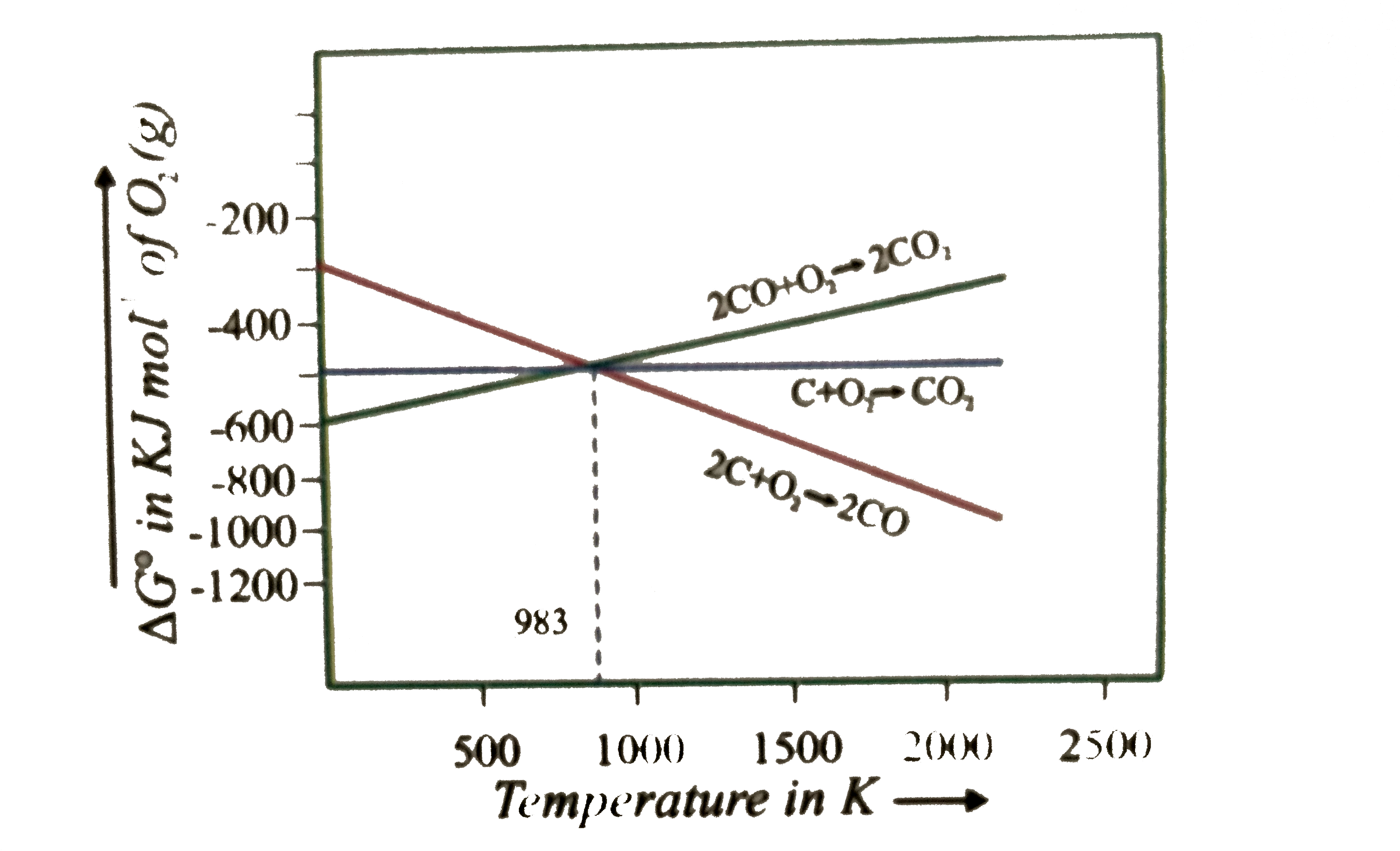Carbon can reduce ferric oxide to iron at a temperature above 983K, because
carbon monoxide formed is thermodynamically less stable than ferric oxide
carbon has a higher affinity towards oxygen than iron
free energy change for the formation of carbon dioxide is less negative than that for ferric oxide
iron has a higher affinity towards oxygen than carbon
The correct Answer is:B
Step by step video, text & image solution for Carbon can reduce ferric oxide to iron at a temperature above 983K, because by Chemistry experts to help you in doubts & scoring excellent marks in Class 12 exams.
Updated on:21/07/2023Topper's Solved these Questions
Similar Questions
Carbon can reduce copper oxide to copper but not CaO to Ca. Why?
View SolutionA tetravalent element forms monoxide and dioxide with oxygen. When air is passed over heated element (1273k), producer gas is obtained. Monoxide of the element is a powerful reducing agent and reduces ferric oxide to iron. Identify the element and write formulas of its monoxide and dioxide. write chemical equations for the formation of producer gas and reduction of ferric oxide with the monoxide.
View Solution
Knowledge Check
Carbon cannot reduce Fe2O3 to Fe at a temperature below 983K because
Afree energy change for the formation of CO is more negative than that of Fe2O3BCO is thermodynamically more stable than Fe2O3Ccarbon has higher affinity towards oxygen than ironDiron has higher affinity towards oxygen than carbon.Cabon cannot reduce Fe2O3 to Fe at a temperature below 983K because.
AFree energy change for the formation of CO is more negative than that of Fe2O3BCO is thermodynamically more stable then Fe2O3CCarbon has higher affinity towards oxygen then ironDIron has higher affinity towards oxygen than carbonCorrect statement(s) regarding the graph

I) Above 983K, Carbon can reduce any metal oxide at high temperature and itself oxidised to CO
(II) In the first reaction (Formation of CO2 from 'C') ΔS0=0&ΔG0 ramains nearly same, i.e. it is independent of temperature
III)In the second reaction, (formation of CO), there is increase is entropy & ΔS0=+ve&ΔG0 becomes more -ve with increase in temperature
(IV)In third reaction(formation of CO2 from CO) there is a decrease in entropy ΔS0=−ve&ΔG0 becomes less -ve with increase in temperatureAOnly IBI,II onlyCI,II,III onlyDAll
A tetravalent element forms monoxide and dioxide with oxygen. When air is passed over heated element (1273k), producer gas is obtained. Monoxide of the element is a powerful reducing agent and reduces ferric oxide to iron. Identify the element and write formulas of its monoxide and dioxide. write chemical equations for the formation of producer gas and reduction of ferric oxide with the monoxide.
View SolutionA tetravalent element forms monoxide and dioxide with oxygen. When air is passed over heated element (1273k), producer gas is obtained. Monoxide of the element is a powerful reducing agent and reduces ferric oxide to iron. Identify the element and write formulas of its monoxide and dioxide. write chemical equations for the formation of producer gas and reduction of ferric oxide with the monoxide.
View SolutionFor the formation of metal oxide, δG∘ __________ with increase in temperature.
View SolutionReduction of oxide with carbon at high temperature is called
View SolutionFerric oxide blast furnace is reduced by
View Solution
